Understanding how our favorite foods have changed is an awesome way to take our breakfast appreciation even further. Let’s look at some breakfast food history.
Pop-Tarts

Once upon a time, Kellogg’s Pop-Tarts were only available unfrosted. It’s a pretty weird thought, considering the iconic look and overall vibe of modern-day frosted Pop-Tarts.
However, back in 1963, the four original flavors — blueberry, strawberry, apple current, and brown sugar cinnamon — were all unfrosted. We’re sure they were still delicious.
But by 1967, Kellogg’s released frosted Pop-Tarts, and the rest was history. You can still buy unfrosted Pop-Tarts today, but they’re probably not exactly the same.
Doughnut

The first doughnuts in breakfast food history were made of sweet dough fried in fat. They were made by the Dutch and called oily cakes, or “olykoeks.”
When Dutch pilgrims arrived in America, their cakes came along, too. But it was difficult to evenly cook doughnuts in a frying kettle, resulting in a hole.
Prunes and apples were sometimes added to the center to fill the hole. But by the 1920s, doughnuts had firmly taken the shape we know today.
Pancakes

According to National Geographic, prehistoric people likely ate pancakes (or pancake-like cakes) about 30,000 years ago. As you can imagine, pancakes have changed a lot since then.
Our prehistoric ancestors used flour made of plants like cattail and fern. Today’s pancakes are generally made with wheat flour, although you can also make them gluten-free.
Throughout history, the toppings people put on pancakes have also changed quite a bit. For example, the ancient Greeks and Romans mainly ate pancakes with honey.
Breakfast Sandwich

Breakfast sandwiches have their roots in 19th-century London. During the British Industrial Revolution, factory workers ate them on their way to work when they needed to hurry.
Back then, breakfast sandwiches were made of soft rolls (called baps), eggs, and meat, like sausage and bacon. Sometimes, they would just add some sausage grease.
The sandwiches were known as “bap sandwiches.” When the Industrial Revolution made it to the U.S., breakfast sandwiches appeared stateside, the first recipe being written in 1897.
Crepes

As a relative of the pancake, crepes have been around for centuries. And for the most part, they haven’t changed much. Personally, we’re glad they haven’t.
The first-ever recipe for crepes, which is from 14th-century medieval France, includes standard ingredients like flour, eggs, salt, water, and powdered sugar. No surprises there.
But here’s the kicker when it comes to crepes: The original crepe batter also called for wine. Excuse me while I go make a medieval French breakfast…
Bread
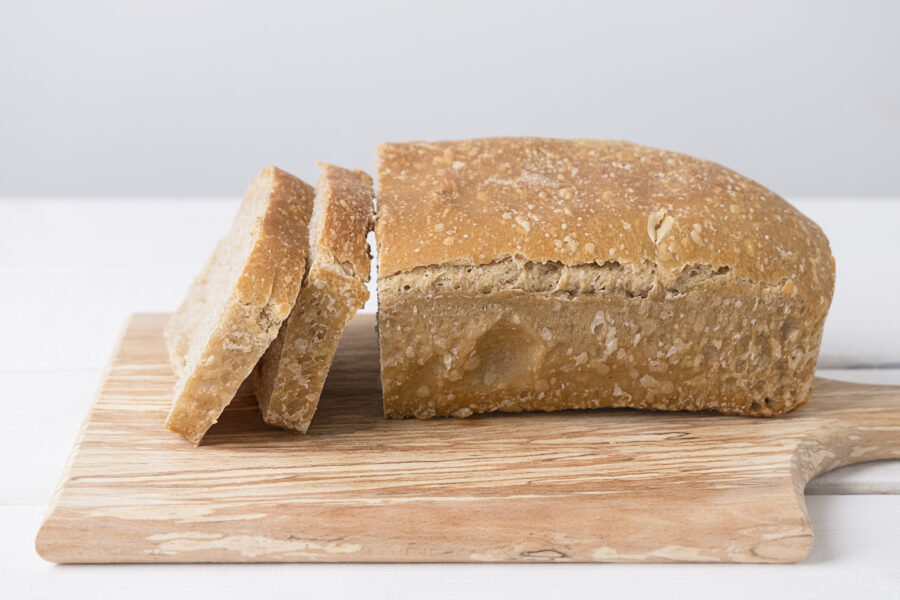
From French toast to egg and cheese sandwiches, breakfast wouldn’t be possible without bread. Bread also happens to be one of the oldest foods in history.
The first-ever breads didn’t look like modern bread at all. They were actually similar to flatbreads and porridge, which could be cooked and easily transported.
It took about 7,000 years for people to discover that they could make leavened breads with yeast. Now we’ve got bread in all shapes and sizes.
Banana Bread

The history of banana bread started in the 1930s, during the Great Depression. Since food was scarce, people made the most out of what they had.
This included overripe bananas, which normally would have been tossed out and wasted. The result was banana bread, one of today’s most popular and delicious breakfasts/snacks/desserts.
However, the first banana breads in the 1930s were small and rough. They were made with a lot of wheat bran, along with less sugar and fat.
French Toast

Allegedly, the first French toast-like recipes started with the Romans during the 5th century. Their dish, called aliter dulcia (“another sweet dish”), didn’t use any eggs.
It was made by dipping bread in milk and frying it in oil and butter. During the Middle Ages, people started using a mixture of milk and eggs.
The recipe lived on throughout the 16th and 17th centuries, making its way around Europe, including France. Today, French toast is enjoyed both sweet and savory.
Waffles

Compared to our simple modern-day waffles, the medieval versions looked so much cooler. According to Smithsonian Magazine, waffles originated from wafers baked between decorative metal plates.
They were created by medieval bakeries, who wanted to make their own versions of communion wafers. The metal plates featured elaborate Biblical scenes and coats of arms.
These plates produced beautiful thin cakes that would put today’s basic waffles to shame. Over time, the wafers evolved into the fluffy waffles that we enjoy today.
Hot Chocolate

The original hot chocolate looked — and tasted — nothing like the hot cocoa of today. In fact, it wasn’t even served hot at all.
The original drink was created by the ancient Mayan and Aztec people, who made it by mixing cacao paste with water. The beverage also wasn’t sweetened.
But when the Spanish took over and brought chocolate back to Europe, the beverage evolved into a warm sweetened drink reminiscent of today’s hot cocoa.
Yogurt
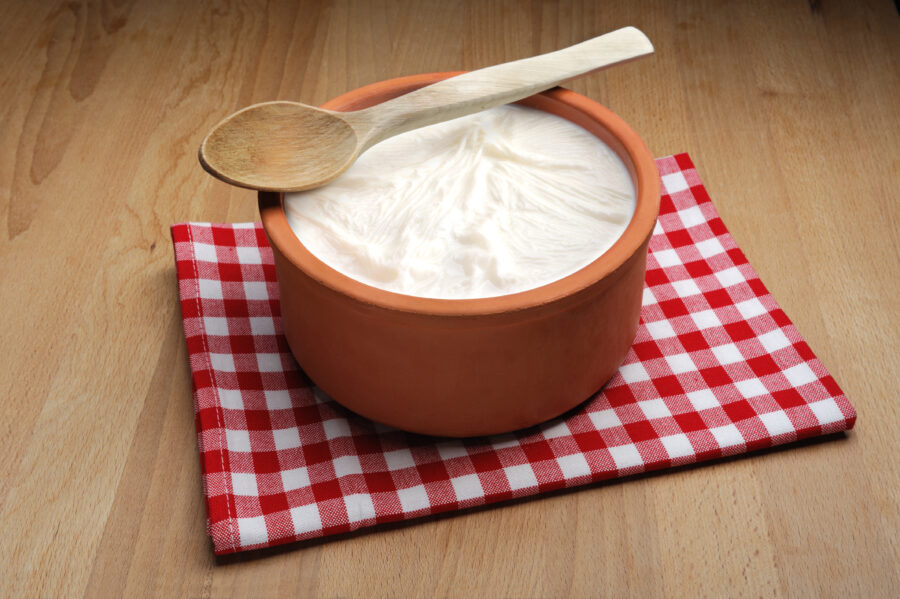
In ancient times, milk was stored in animal stomachs. The good bacteria in the stomachs curdled the milk, essentially turning it into yogurt. Sounds…delicious?
This also stopped the bad bacteria from spoiling the milk, which extended its shelf-life and made it travel-friendly. This was crucial for trading for other goods.
Commercial yogurt is no longer made with animal gut bacteria. It’s made with Lactobacillus bulgaricus, a bacteria that was discovered by microbiologist Stamen Grigorov in 1905.
Eggs Benedict

Depending on which story you look at, eggs Benedict has different origins. In one version, Delmonico’s Restaurant created it in the 1860s for a regular customer.
But another version says that the first eggs Benedict was made with normal toasted bread and crispy bacon in the 1940s, according to The New Yorker.
After making it for a Wall Street broker, the hotel’s chef, Oscar Tschirky, loved the recipe so much that he made his own version with Canadian bacon.
Croissant

Croissants may be known for their flaky dough, but this wasn’t always the case. Croissants are based on kipferl, an Austrian pastry made in various shapes.
The kipferl has been around since the 13th century. August Zang, who owned a pastry shop in Paris, started selling flaky kipferl in around 1838.
Locals also started to call the pastries “croissants” because of their crescent shape. Today, croissants have carved out their own tasty category in the world of pastries.
Scones

Allegedly, the first scones were baked in Scotland during the 16th century. Scones were originally made with oats or barley flour, which differs from our scones today.
The dough was cut into multiple triangles and baked. They were known then as “bannocks,” and they were the perfect snack for travelers on the go.
Scones back in the day were also griddle-baked rather than being baked in the oven like they are today. Something tells us a griddle-baked scone would be delicious.
Omelette

In the 4th century, the ancient Romans ate a meal called “ova spongia ex lacte,” which translates to honey omelette. And it’s basically what it sounds like.
The recipe for honey omelette called for four eggs, a half-pint of milk, and oil. It was folded and eaten with a dash of honey and pepper.
And while you’ll no longer find eggs seasoned with honey and pepper these days, the combo is apparently delicious. In our opinion, it’s well worth a try.
Oatmeal

Oatmeal has different variations throughout the world, so it’s hard to determine a specific, linear history. We do know that it’s been eaten for thousands of years.
What’s interesting about this breakfast food history is that oatmeal’s earliest incarnations weren’t considered suitable for human consumption. In fact, oats were primarily eaten by animals.
In the 19th century, that started to change when companies like Quaker Oats started marketing their products to humans. Where would we be without oatmeal?
Corned Beef Hash
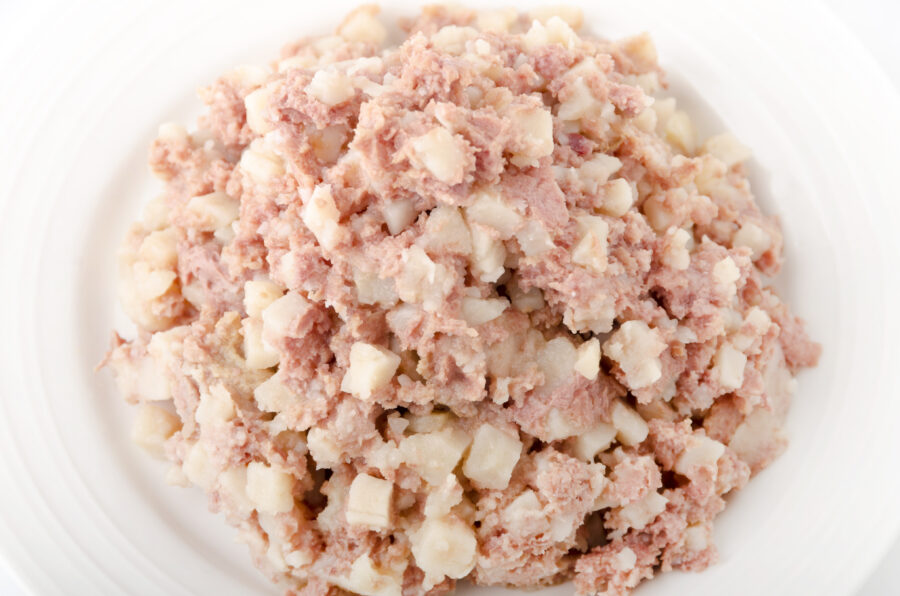
Hash, in some form, has been around for centuries. Generally, it refers to chopped potatoes, meat, and onions, all cooked together into a delicious savory meal.
Corned beef hash is pretty popular, especially in the US. If you’re not chowing down on an Irish breakfast on St. Paddy’s, this is what you’re having.
Hash first took off in New England, using leftovers from the previous night’s dinner. Cabbage was also added to the mix to stretch the good stuff further.
Cinnamon Rolls
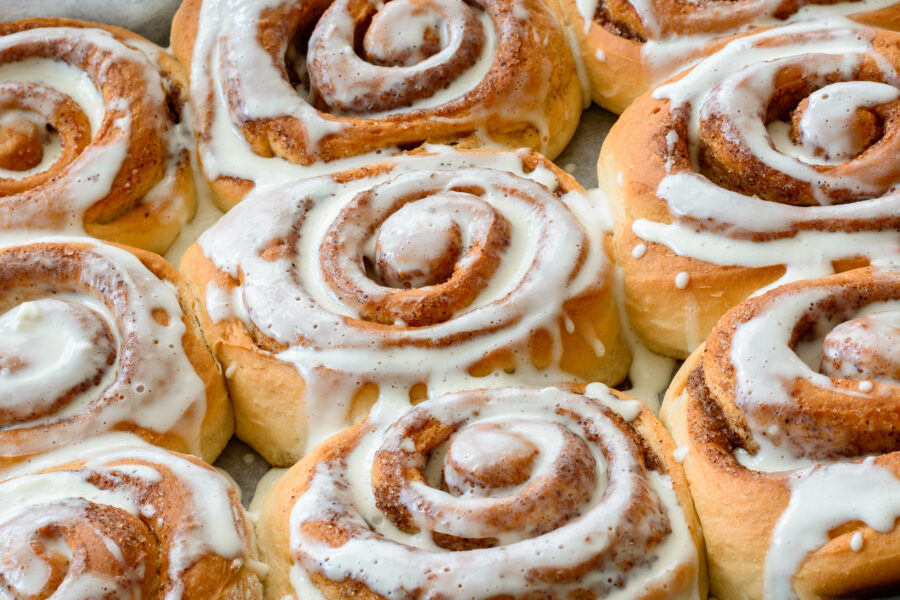
Cinnamon rolls are a sweet, popular breakfast all around the world, though their origins are apparently Swedish. In fact, Sweden and Finland both celebrate Cinnamon Roll Day.
In Sweden, the rolls are all cooked together, so it comes out like a large cake. This differs from today’s cinnamon rolls which are separated before baking.
They’ve been around since the 1920s, and were nowhere near as sugary and sweet as the American version we’re all most familiar with. No frosting? No fun!
Muffins
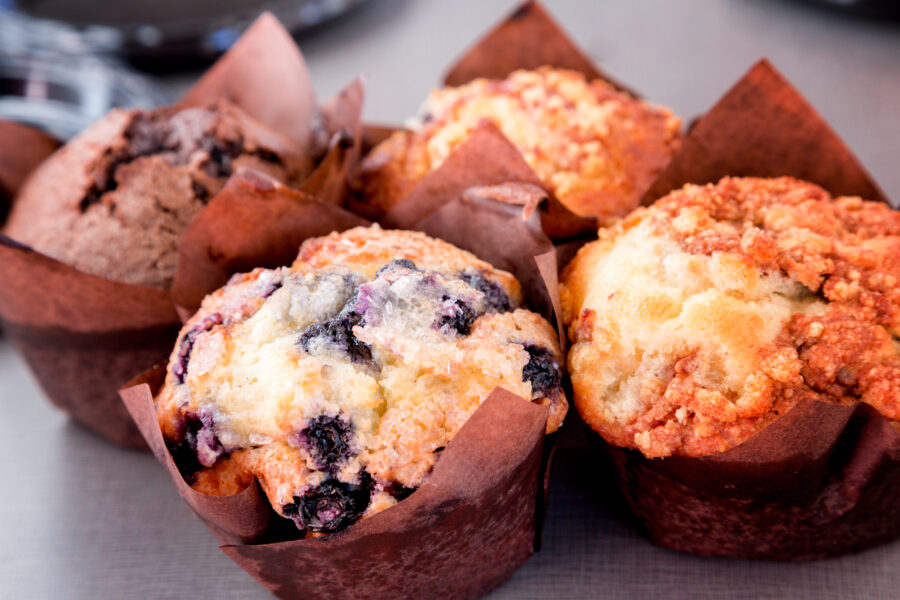
Muffins (at least, the American version) have been around in some form or another since the 1800s. Back in the day, they were smaller and less sweet.
They’ve been around in Britain for even longer, dating back to the 18th century. These are less sweet than the American version. No surprise there.
You’ve probably had English muffins before. They’re flatter and typically cooked on a griddle and served with butter. They were pretty big in colonial America, as well.
Breakfast Tacos and Burritos

In our humble opinion, breakfast burritos and tacos are the perfect breakfast food. Eggs, cheese, meat, and veggies all rolled up in a warm tortilla? Yes, please.
You would think that breakfast burritos would go back a long time. But according to most reports, the modern breakfast burrito wasn’t created until 1975.
Breakfast tacos are thought to have been around longer, even though they’re less common today. They are believed to have originated in the early 1900s in Mexico.
Cereal

As hard as it is to believe, cereal hasn’t always been the surgery-sweet breakfast treat we know today. It actually started as a digestive aid.
Cereal is an interesting food historically because it has reflected changes in society throughout history. In the 1800s, it was created by a doctor for his patients.
It remained a relatively healthy breakfast choice until around the 1940s and 50s. Cereal brands became more diverse, and consumption boomed after World War II.
Bagels

Bagels are one of those breakfast basics that might seem simple at first glance. But they actually have a storied history, rich with variations and cultural implications.
Originally, bagels were made exclusively with yeasted wheat. Today, you can find many bagels made with rye, sourdough, whole wheat, multigrain, pumpernickel, and other variations.
Bagels originated in Poland in the 17th century. They were then brought over to the United States, where they became a popular staple in a modern breakfast.
Brunch Cocktails

Having a cocktail at a meal combining breakfast and lunch wasn’t always in vogue. But did you know that this fascinating and boozy trend boomed during Prohibition?
In the 1920s, brunch quickly became known as an opportunity to indulge in some daytime drinking. You could easily disguise the alcohol with fruity and savory juices.
Brunch cocktails Bloody Mary, the Mimosa, and the Bellini were once relatively simple. Over time, they’ve become more and more elaborate with unique garnishes and additions.
Hashbrowns

The first mention of this salty, starchy staple appeared in 1887 in a book called Kitchen Companion. Author Maria Parloa described them as “hashed and browned potatoes.”
She explained in the recipe that you should use cold boiled potatoes. Fry them up, and then fold them over like an omelet before serving.
Over time, the name “hashed and browned potatoes” became shortened to simple “hash browns.” Today, many people use frozen shredded potatoes for a quick breakfast.
Bacon

Bacon is one of the most ancient breakfast foods on this list, dating back to 1500 BC. That’s a lot of bacon, when you think about it.
How we prepare bacon has changed over time. Salted pork belly first appeared in China. As it spread to Europe, the term “bacon” came into use.
Today, bacon comes in lean and low-sodium varieties, which didn’t exist back then. We also use bacon to liven up other foods, and even in desserts!
Orange Juice

The change in orange juice over time is more of a cultural change than a physical one. Before the 1800s, acquiring oranges was reserved for the wealthy classes.
By the late 19th century, access to oranges and the demand for oranges increased. This was because doctors discovered that the citrus fruit could prevent scurvy.
Orange juice became a breakfast staple in American homes because of an oversupply of oranges in Florida in the early 1900s. Talk about a happy accident!
Coffee

The major trends in coffee that we know today, such as light-roast coffees, cold brew, and fancy lattes, didn’t always exist. Coffee was once a humble beverage.
Making coffee has also changed over time. Before the advent of the automatic coffee pot, you would brew coffee on top of a stove in a percolator.
Now, we can make a full pot of coffee in just a few minutes. But if you miss the old ways, you can still buy percolators today.
The Full English

The full English breakfast, complete with eggs, beans, sausages, and tomatoes, has been around for centuries. And it’s still just as popular as a hearty breakfast meal today.
The meal began in the 1300s or 1400s, when the Landed Gentry would feast following a grant hunt. After that, it was adopted by the upper classes.
For rich Victorians, the spread you presented at breakfast was an indicator of your wealth and hospitality. So the English breakfast went from humble to impressive.
Toast

Toast wasn’t always just a delicious vehicle for ingredients like butter, jam, and nut butter. It started out as a practical way to make stale bread more palatable.
Toasting bread was used for this around the 1600s. Before that, toast was mainly used as an addition to certain drinks. This is why we give “toasts.”
You wouldn’t necessarily eat the toast after dipping it in your drink. The toast would deposit spices into the drink, and possibly absorb some of the acid.
The History of Breakfast

The history of what we eat for breakfast is fascinating. It takes us through the history of our culture and society in a way that is relevant.
So the next time you sit down to a slice of toast with jam, remember that the original use for toast was flavoring a drink.
And if you find yourself reaching for a Bloody Mary at Sunday brunch, remember that people during Prohibition walked so you could run. Happy eating!





